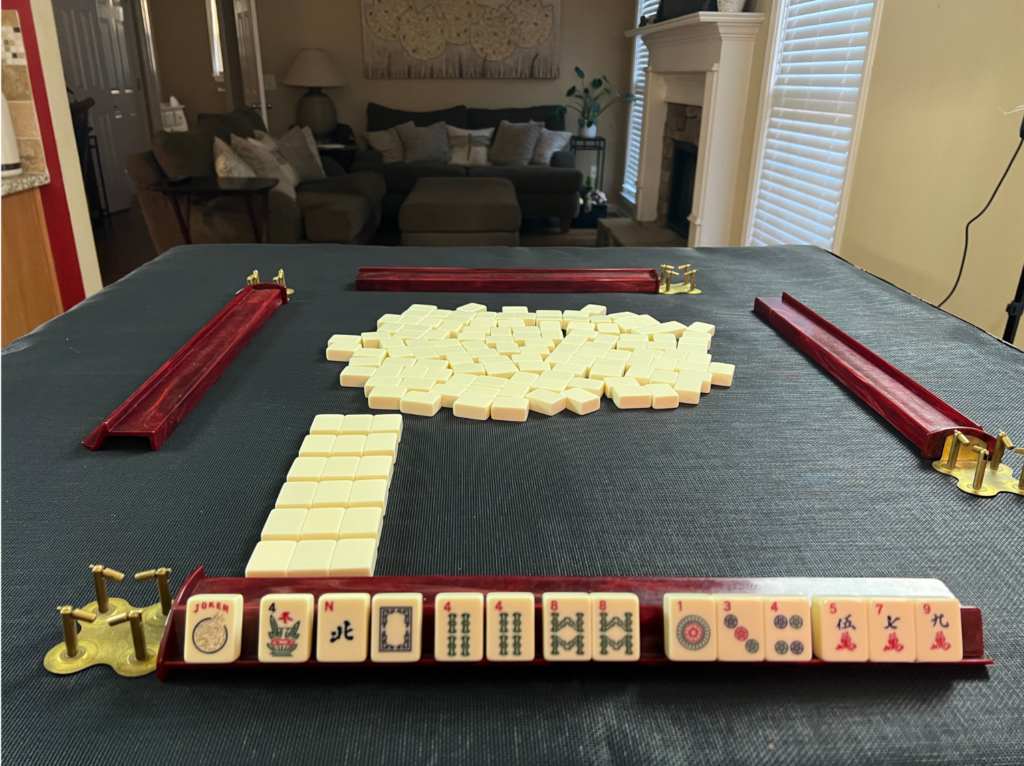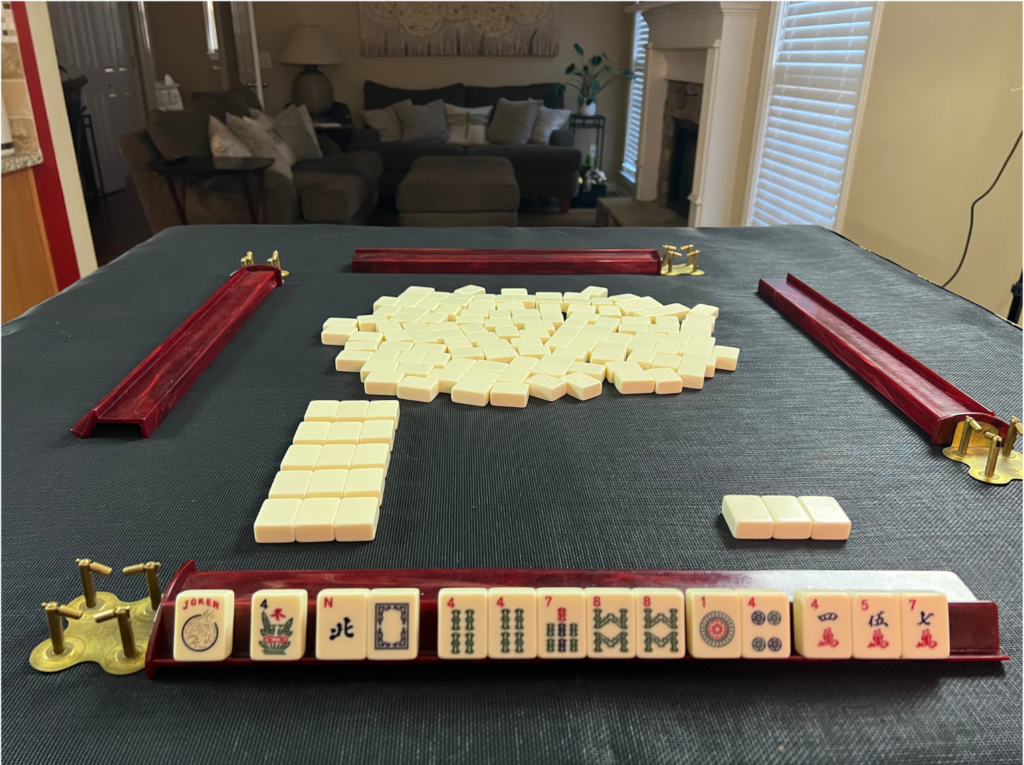How Can We Help?
GUIDELINES FOR DECISION-MAKING TIME (Article 198)
The National Mah Jongg League (NMJL) has not established official guidelines for decision-making timeframes during a game, but they say to “pause a beat.” The general consensus in the community is that players should keep up with the agreed-upon pace. A good rule of thumb is to 8-10 seconds for decision-making during a turn and 3 seconds before picking or claiming a discard.
Here are three steps to establish guidelines for your group.
Step 1 Define the Group Dynamic
Identify which of the following best defines the group dynamic:
- Legacy – play by NMJL rules using rules that have been revoked (i.e., picking ahead, playing with futures)
- Casual – play by NMJL rules with leniency (i.e., forgiving mistakes; socializing)
- Formal – play by NMJL rules, strictly (i.e., no house rules or legacy rules; socializing)
- Enhanced – play by NMJL rules with house rules that encourage defensive play (i.e. hot wall, cold wall), inflate hand values (i.e., rolling doubles=double value), or add variations (i.e., Atomic; socializing)
- Competition – play by tournament rule
Step 2 Assess Player Experience Levels
Assess the overall experience of the players in the group:
- A beginner has a partial understanding of the rules and can play the game with assistance. Will need additional time for decision-making throughout the game.
- An intermediate player has a basic understanding of the rules, can play the game independently, and can apply simple strategies. Will need additional time occasionally for decision-making in complex situations.
- An advanced player has a comprehensive understanding of the rules, can play the game with confidence, and can apply complex strategies. May need additional time rarely for decision-making in complex situations.
Step 3 Establish Guidelines
Study the timeframes below:
| Experience Level | The Charleston (max per pass) | The Play (max per turn) | Total Time per Game |
|---|---|---|---|
| Beginner | About 30 seconds | About 15 seconds | 20-30 minutes |
| Intermediate | About 20 seconds | About 10 seconds | 15-20 minutes |
| Advanced | About 12 seconds | About 8 seconds | 12-15 minutes |
Establish guidelines by modifying timeframes based on the group dynamic and the overall player experience level.
If you want to train yourself to make quick decisions, try Charleston Sprints.
Take fourteen random tiles and create a mock-Charleston by lining up six rows of three tiles each (Fig. 1).
Place your first pass on the right (outgoing column) upside down, in front of your rack (Fig. 2).
Then, take the first pass and place it in the sloped part of your rack. Keep tiles for the category you are playing and select three more tiles to pass and so on. After the first and second Charleston rounds, select up to three tiles for the optional cross pas and place them to the side. Finally, mix all the tiles that were used in the Charleston and take the same number of tiles in your optional cross pass.
Use a stopwatch to time your decision-making through the Charleston. Do three sprints and take an average of your time. Here are recommended thresholds:
| Experience Level | The Charleston (three-sprint average) |
|---|---|
| Beginner | 4 minutes |
| Intermediate | 3 minutes |
| Advanced | 2 minutes |
Video demonstrations are available on YouTube.
For large groups or public drop-in groups, a charter should be in place to manage expectations. You may also be interested in reading about GROUP CULTURE – FRIENDLY GAME VS PLAYING BY THE RULES (Article 149).
Striking the right balance between quick decision-making and thoughtful strategy is key to an enjoyable and competitive Mah Jongg experience. While careful consideration of choices is important, excessive delays can slow the game’s pace and frustrate other players. Establishing clear guidelines for decision-making helps maintain a smooth flow, keeping everyone engaged while still allowing players the opportunity to refine their skills without unnecessary pressure or delays


